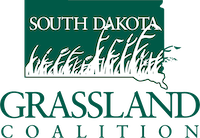We’re in our third year of custom grazing sheep at Rock Hills Ranch. Our pastures have a diverse mix of grass, forbs, and shrubs, some of which cattle won’t consume. Western snowberry has been problematic ever since Lyle and I arrived here 45 years ago. Leafy spurge moved in more recently as has Canada thistle and wormwood sage. Chemical treatment is labor-intensive, expensive, and not all that effective. Trying to teach the cows to eat western snowberry and using flea beetles on the leafy spurge helped, but not enough. Lyle and Luke knew sheep or goats were a solution as they prefer eating broad-leaf plants, but keeping them on the property and safe from coyotes were issues.

